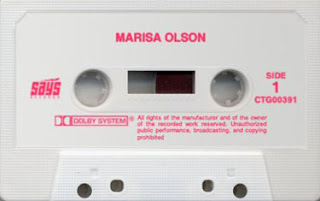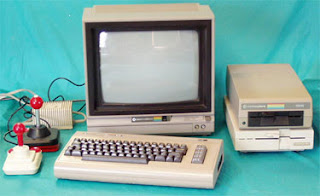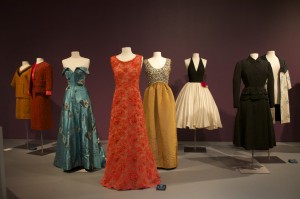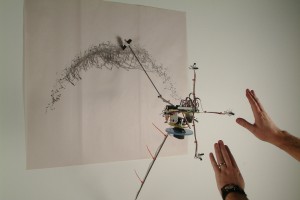
The following is a transcript of a telephone conversation I had with Marisa Olson.Feel free to download the podcast if you prefer to listen, but I must warn you that the quality of the audio is appallingly bad.
The first question I asked was supposed to be “What is New Media Art?”, a question Marisa, classified as a new media artist herself and also curator-at-large and staff writer for the new museum’s new media component; rhizome.org, is in a better position then most to attempt to answer. However, I forgot to turn on the recorder for most of that answer.
Marisa, who lives in New York and has recently taken her oeuvre on tour to Paris, Berlin, and Cincinnati, Ohio, is in no fewer then two exhibitions in Philadelphia at the minute. A solo exhibition of her work, “Background Information”, opens at the Esther M. Klein Gallery TONIGHT! (she is also in Bitmap at Drexel):
New Media can be old
Annette: You mentioned earlier that New Media art doesn’t necessarily have to deal with new technologies because a lot of the [technology] used in [what’s classified as] New Media art is now old. I noticed in your personal artwork there’s a lot of nostalgia, maybe, for artwork gone by. Could you address that issue?
Marisa: You mean for media that’s gone by?
Annette: Yes [sorry]. For instance on your blog you have an image of a [cassette] tape with your name on it which looks sort of “bubblegum pop”, and I noticed you’ve done a lot of drawings based off images you found on the internet that were of older headphones and recording devices. . .
Marisa: Yeah. That work that I’ve done with mixed-tapes and headphones and that sort of thing, it definitely initially came out of a space of nostalgia, but as I worked more and more with it I’ve asked myself why I’m so interested and I’ve realized that I’m more into media change then anything. I’m more interested in what are the cultural or political forces that compel people to keep upgrading and keep making the new ipod or the new device that makes the old one obsolete. More so, what happens to those old things? Do they just end up in landfills?
These drawing’s that I’ve been making, these monitor tracings–sorry it’s really loud outside–
Annette: s’ok
Marisa: In a way they are about the google image search and the way the internet is becoming this depository for our memories of these things, these things that are sort of “out of sight, out of mind”. The other thing about these drawings is thinking about the monitor as the newest technology in the lineage of technologies that have assisted artists, like the camera obscura, the overhead projector, that kind of thing. It’s all kind of about the evolution of technology.
I’m really nerdy
Marisa: I’m really nerdy.
Annette: Actually, I was wondering how nerdy you are? Do have, like a degree? How much technology do you actually understand? I realize that you have to be able to manipulate it. . .
Marisa: When I was a little kid I was a total computer-programmer nerd on my Commodore 64 and now I write a lot of html, everyday, by hand, but I’m not like a hard-core programmer by any means.
Annette: Well html is kind of old isn’t it, if you were [hard-core] you’d be writing in something crazy, like not even Java Script anymore I don’t think. . .
Marisa: Yeah. I can’t really do any of that stuff. But I can understand what it can do and have conversations with people about it, which I like. I like learning more, it’s kind of mystifying and really interesting.
Speaking of degrees, I don’t really have a degree in computer science but in the course of working on my PHD one of my official field titles was “The Cultural History of Technology” so I have spent a lot of time studying the history of batteries, televisions, telephones, and video games. . .

Marisa Olson, Free Gift Economy, 2007, screengrab AFC, stolen from artfagcity.
24
Annette: Is that like studying “The History and Philosophy of Science” or something?
Marisa: Yeah. Exactly, it’s very closely related.
Annette: I always liked those kind of courses. That sounds pretty cool.
Marisa: Yeah, me too. Thomas Khun is one of my favorite writers, “The Structure of Scientific Revolutions”.
Annette: Oh, yeah. I remember reading that in a class called something like “History and Science of Philosophy 101” or something.
Marisa: I re-read it every single year. Twenty-four is my favorite page.
Annette: I have no idea what that refers to but I’ll look it up.
Marisa: It’s just this line about how science is trying to force nature into a conformed thought. It’s all about how science as a field is trying to confirm existing ways of thinking, existing paradigms, and you have to wait until enough things don’t fit into the box until you change the box. I dunno. I like stuff like that.
————————————————————————————————
[Cut out in acknowledgment of all of our sort attention spans
A bit about gender politics, which is a sore spot of mine and makes me sound like a dweeb. (As you may too notice; Marisa’s work looks “girly” and I wondered why.)
A bit about Marisa’s childhood, basically stating that she had very technological parents. (“They were in intelligence”)
Some bits about how the opening she attended in Cincinnati, Ohio was one of the funnest openings she has attended in a long time. . .
And, just a recap of all the myriad of things Marisa has been up to this summer.]
————————————————————————————————-
Conclusion
Annette: I just want to end with a little bit more about your show at Esther Klein Gallery that is coming up on Friday. It’s called Background Information, what sort of spurred the ideas of the work in the show?
Marisa: All the work in the show revolves around images pulled from the internet that are not really meant to be looked at directly. I’m going to do a wallpaper installation of the background image on my myspace page, which a lot of these animated .gifs are referred to as wallpaper files. I’m actually making wallpaper out of it.
Then there are are other things like a flickr space search bale, it’s an image that flickr uses to cover up “inappropriate images”, or a comparison of the background images that really hide in the background of the web-pages for McCain and Obama, just showing only the background and you can kind of think about whose is whose, and other kinds of images that are meant to be peripheral rather then foreground images but have a kind of duty and cultural relevance of their own.
There’s also going to be a video animation that uses only icons from my facebook page.
It’s kind of a double entendre, background information in terms of background images, but also background information about myself and the kinds of web pages I’ve been looking at. It’s kind of a self-portrait in a way, the type of material that I tend to surf.
Annette: Yeah. Especially coming from your myspace page, that seems pretty auto-biographical.
Marisa: Yeah, even though looking at this wallpaper of glittery stars isn’t going to tell you that much about me, but that’s kind of funny too because I think that the whole discourse of auto-biographical art could use some critique.
END










